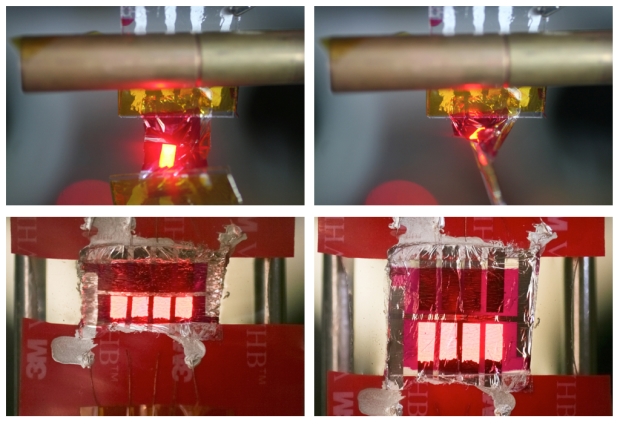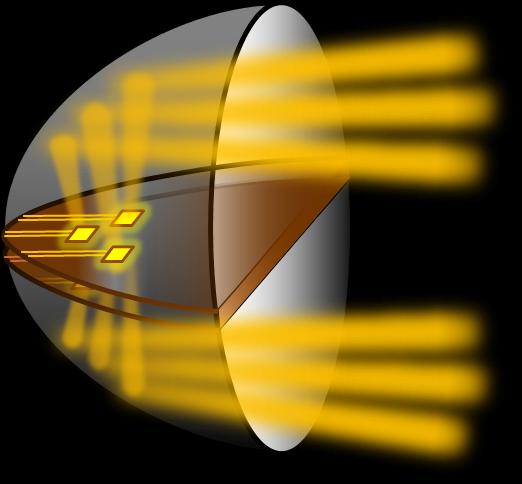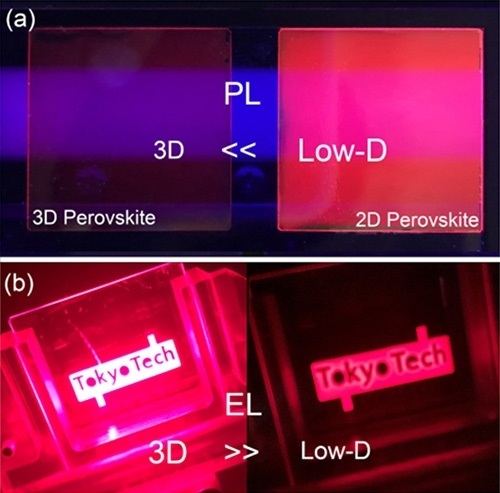July 29,2013
Ultrathin plastic sensors developed jointly by researchers at the University of Tokyo (Japan) and researchers at the Johannes Kepler University (JKU) Linz are being considered a scientific breakthrough. The large-scale research project has also cleared the way for additional research success and together with colleagues from Japan, scientists at the Institute for Physical Chemistry (JKU Linz) have developed new light-emitting diodes. Only two micrometers in size, these are now the world’s most ultrathin polymer-based light-emitting diodes (PLEDs).
This scientific breakthrough will be published in the renowned journal “Nature Photonics”. The new PLEDs are ten times thinner than household plastic wrap, extremely flexible and can even be rolled or crumpled like a sheet of paper. They are even stretchable when applied to a rubber pad. Dr. Matthew White, head of the international collaboration, explained: “The possibilities are limitless, including a display that could expand when there is something interesting to see.”
Numerous Areas of Application
Researchers believe there are potential applications in displays or textiles – “wherever weight and flexibility are important.” PLEDs have been around since the 90s and even then they were ultrathin. However, PLEDs have to be attached to a substrate which was often glass a millimeter in size or plastic 100 micrometers in size. The substrate was thus between 1000 and 10,000 times thicker than the PLED itself, basically defeating any advantageous purpose. The technology developed by the Upper Austrian-Japanese research team is revolutionary because now these PLEDs entire size, including the substrate, amounts to only 2 micrometers. The potential is almost limitless.
Interdisciplinary Success
The breakthrough was made possible by using customized, light-emitting polymers with excellent red emissions. The new PLEDs are very bright and commercial applications are already on the horizon. Dr. White added: “Stretchable PLEDs can be used with malleable materials such as textiles for fashion or advertising, security technology as well as in medicine on artificial skin or as ‘intelligent bandages’.”
Research has been made possible through close, interdisciplinary cooperation supported by the JKU as well as collaboration with the Institute for Physical Chemistry, the Institute for Organic Solar Cells (IPC/LIOS), the Institute for Soft Matter Physics, the Institute of Polymer Product Engineering as well as numerous guest researchers. The project was funded by grants and awards from the Austrian FWF Wittgenstein Award, the ERC Advanced Investigators Grant ‘SoftMap’ and a grant by JST-ERATO Someya Bio-Harmonized Electronics.
Source:
http://www.jku.at/content/e213/e63/e43?apath=e32681/e189960/e211048/e212897















